#corn seeds
Text
The Corn Market: Dynamics, Influencing Factors, and Future Outlook

The Corn Market has witnessed substantial growth, reaching a remarkable volume and demand of 1,170.55 million tons in 2022. With a projected compound annual growth rate (CAGR) of 1.1% during the forecast period of 2023-2028, the corn market continues to display promising potential. This growth can be attributed to several factors, including population growth, changing dietary preferences, expanding livestock industries, and the increasing demand for biofuels. As one of the most widely cultivated and versatile cereal grains, corn plays a crucial role in meeting the food, feed, and industrial needs of a rapidly evolving global economy.
Get a Free Sample Report: Corn Market Report Sample 2023-2028
Introduction to the Corn Market
Definition and importance of corn:
Corn, also known as maize, is a cereal grain widely cultivated and consumed around the world. It is a staple crop in many countries and plays a vital role in food security and agricultural economies. Corn is versatile and used for various purposes, including human consumption, livestock feed, ethanol production, and industrial applications.
Overview of the global corn market:
The global corn market encompasses the production, trade, and consumption of corn on a global scale. It involves various stakeholders, including farmers, traders, processors, and end-users. The market is influenced by factors such as supply and demand dynamics, weather conditions, government policies, and international trade patterns.
Significance of the corn market in agriculture and various industries:
The corn market holds significant importance in agriculture and various industries due to its wide range of applications. In agriculture, corn serves as a source of income for farmers and contributes to rural development. It also supports the livestock industry as a primary feed ingredient. Additionally, corn plays a crucial role in the production of ethanol, a renewable biofuel, and serves as a raw material for food, beverage, and industrial manufacturing sectors.
Factors Influencing the Corn Market
Supply factors:
Global corn production and acreage:
The level of corn production and the total acreage dedicated to corn cultivation impact the overall supply in the market. Factors affecting production include agricultural practices, technological advancements, availability of land, and shifts in crop rotation patterns.
Weather conditions and natural disasters:
Weather events such as droughts, floods, heatwaves, and hurricanes can significantly affect corn crops. Adverse weather conditions can lead to reduced yields, crop damage, and supply disruptions, resulting in price fluctuations.
Technological advancements in farming practices:
Innovations in agricultural technology, such as improved seeds, precision farming techniques, and mechanization, can increase productivity and yield potential. These advancements influence the overall supply of corn by enabling farmers to optimize production and mitigate risks.
Demand factors:
Population growth and changing dietary preferences:
The growing global population and changing dietary preferences, particularly in emerging economies, impact the demand for corn as a food staple. Increasing urbanization, income levels, and a shift towards more processed foods contribute to the rising demand for corn and its derived products.
Feed and livestock industry demand:
The livestock sector is a major consumer of corn, utilizing it as a primary feed ingredient. The demand for meat and animal products, influenced by factors such as population growth, income levels, and dietary trends, directly impacts the demand for corn.
Ethanol production and biofuel policies:
Government policies promoting biofuels, such as ethanol, have a significant impact on corn demand. The use of corn for ethanol production is influenced by energy policies, environmental concerns, and the availability of alternative feedstocks. Biofuel mandates and subsidies can drive increased corn demand for ethanol production.
International trade and export/import dynamics:
The corn market is influenced by global trade patterns and policies. Importing and exporting countries, trade agreements, tariffs, and transportation costs play a crucial role in shaping the demand and supply dynamics of the corn market.
Price Determinants and Fluctuations
Market fundamentals:
Supply-demand balance:
The interaction between corn supply and demand establishes the fundamental basis for price determination. If supply exceeds demand, prices tend to decline, while a supply shortage relative to demand can lead to price increases.
Inventory levels and carryover stocks:
The levels of corn inventories, including carryover stocks from previous seasons, impact price stability and market expectations. Sufficient stocks can buffer supply shocks and mitigate price volatility, while low inventories or stockpiling can lead to price spikes.
Speculation and financial market influences:
Commodity futures trading:
Speculators, including hedge funds and other financial investors, engage in trading corn futures contracts. Their activity can influence short-term price movements, as they take positions based on their expectations of future market conditions.
Role of hedge funds and institutional investors:
Large institutional investors and hedge funds can impact the corn market through their investment strategies and market participation. Their trading decisions and allocation of capital can contribute to price fluctuations, particularly in futures and derivative markets.
Government policies and subsidies:
Agricultural subsidies and support programs:
Government policies, including subsidies, direct payments, and crop insurance programs, can affect corn production and prices. Subsidies provide financial incentives to farmers, influencing planting decisions and overall market supply.
Trade policies and tariffs:
Import and export policies, including tariffs and trade restrictions, imposed by governments can impact corn prices. Trade barriers can limit access to markets and influence supply-demand dynamics.
Major Corn-producing countries:
United States:
The United States is the largest producer and exporter of corn globally. Its corn market is influenced by factors such as weather conditions, government support programs, technological advancements, and domestic and international demand.
Brazil:
Brazil is a significant player in the corn market, with expanding production and increasing exports. The country's corn market is driven by factors such as favorable climatic conditions, agricultural expansion, and its position as a major global supplier.
China:
China is both a major producer and consumer of corn. The country's corn market is influenced by government policies, including stockpiling programs and feed industry demand.
Argentina:
Argentina is a significant corn producer and exporter, with its market influenced by factors such as weather conditions, government policies, and export competitiveness.
Major Key Players of Corn Industry:
Archer Daniels Midland Company (ADM):
ADM is a global agricultural processor and food ingredient provider. It is one of the largest players in the corn market, involved in the production, processing, and distribution of corn and its derivatives. ADM operates a vast network of processing facilities and transportation infrastructure, allowing them to efficiently handle corn sourcing, processing, and distribution on a global scale. They offer a wide range of corn-based products, including corn oil, starches, sweeteners, and ethanol. ADM's expertise in agricultural commodities, extensive supply chain capabilities, and strong market presence make them a key player in the global corn market.
Cargill, Incorporated:
Cargill is a multinational corporation involved in the trading, processing, and distribution of agricultural commodities, including corn. With a strong global presence, Cargill plays a significant role in the corn market through its sourcing, processing, and marketing activities. The company operates corn processing plants and offers a range of corn-based products for food, animal feed, and industrial applications. Cargill's expertise in risk management, supply chain management, and innovation positions them as a major player in the global corn market.
Bunge Limited:
Bunge is a leading global agribusiness and food company involved in the production, processing, and distribution of corn and other agricultural commodities. In the corn market, Bunge engages in sourcing, trading, and processing corn into various products, including animal feed, food ingredients, and ethanol. The company operates a vast network of processing facilities, storage terminals, and transportation infrastructure, enabling them to efficiently serve customers worldwide. Bunge's strong presence in key corn-producing regions and their expertise in commodity trading and processing make them a key player in the global corn market.
Syngenta AG:
Syngenta is a global agriculture company that specializes in seeds, crop protection products, and agricultural technologies. While not primarily focused on corn production, Syngenta plays a vital role in the corn market through its development and sale of corn seeds and traits. The company invests in research and development to improve corn varieties, enhance yield potential, and provide solutions for pest and disease management. Syngenta's innovation in corn genetics and biotechnology contributes to the advancement and productivity of the corn industry globally.
Corteva Agriscience:
Corteva Agriscience is a leading global agricultural company that focuses on providing innovative solutions for farmers. As a key player in the corn market, Corteva offers a wide range of corn seeds, traits, and crop protection products. The company invests in research and development to develop high-performing corn hybrids that help farmers maximize yield potential and address challenges such as pests, diseases, and environmental conditions. Corteva's commitment to sustainable agriculture and their expertise in seed genetics and crop protection technologies position them as a significant contributor to the global corn market.
0 notes
Text
"In response to last year’s record-breaking heat due to El Niño and impacts from climate change, Indigenous Zenù farmers in Colombia are trying to revive the cultivation of traditional climate-resilient seeds and agroecology systems.
One traditional farming system combines farming with fishing: locals fish during the rainy season when water levels are high, and farm during the dry season on the fertile soils left by the receding water.
Locals and ecologists say conflicts over land with surrounding plantation owners, cattle ranchers and mines are also worsening the impacts of the climate crisis.
To protect their land, the Zenù reserve, which is today surrounded by monoculture plantations, was in 2005 declared the first Colombian territory free from GMOs.
...
In the Zenù reserve, issues with the weather, climate or soil are spread by word of mouth between farmers, or on La Positiva 103.0, a community agroecology radio station. And what’s been on every farmer’s mind is last year’s record-breaking heat and droughts. Both of these were charged by the twin impacts of climate change and a newly developing El Niño, a naturally occurring warmer period that last occurred here in 2016, say climate scientists.
Experts from Colombia’s Institute of Hydrology, Meteorology and Environmental Studies say the impacts of El Niño will be felt in Colombia until April 2024, adding to farmers’ concerns. Other scientists forecast June to August may be even hotter than 2023, and the next five years could be the hottest on record. On Jan. 24, President Gustavo Petro said he will declare wildfires a natural disaster, following an increase in forest fires that scientists attribute to the effects of El Niño.
In the face of these changes, Zenù farmers are trying to revive traditional agricultural practices like ancestral seed conservation and a unique agroecology system.
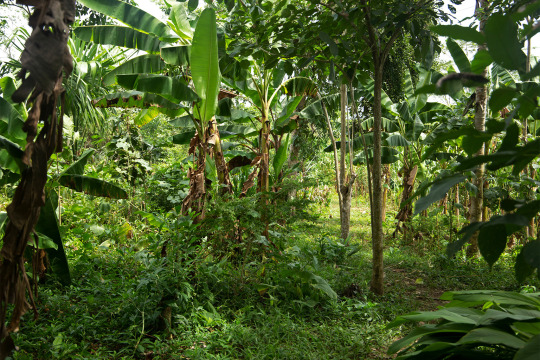
Pictured: Remberto Gil’s house is surrounded by an agroforestry system where turkeys and other animals graze under fruit trees such as maracuyá (Passiflora edulis), papaya (Carica papaya) and banana (Musa acuminata colla). Medicinal herbs like toronjil (Melissa officinalis) and tres bolas (Leonotis nepetifolia), and bushes like ají (Capsicum baccatum), yam and frijol diablito (beans) are part of the undergrowth. Image by Monica Pelliccia for Mongabay.
“Climate change is scary due to the possibility of food scarcity,” says Rodrigo Hernandez, a local authority with the Santa Isabel community. “Our ancestral seeds offer a solution as more resistant to climate change.”
Based on their experience, farmers say their ancestral seed varieties are more resistant to high temperatures compared to the imported varieties and cultivars they currently use. These ancestral varieties have adapted to the region’s ecosystem and require less water, they tell Mongabay. According to a report by local organization Grupo Semillas and development foundation SWISSAID, indigenous corn varieties like blaquito are more resistant to the heat, cariaco tolerates drought easily, and negrito is very resistant to high temperatures.
The Zenù diet still incorporates the traditional diversity of seeds, plant varieties and animals they consume, though they too are threatened by climate change: from fish recipes made from bocachico (Prochilodus magdalenae), and reptiles like the babilla or spectacled caiman (Caiman crocodilus), to different corn varieties to prepare arepas (cornmeal cakes), liquor, cheeses and soups.
“The most important challenge we have now is to save ancient species and involve new generations in ancestral practice,” says Sonia Rocha Marquez, a professor of social sciences at Sinù University in the city of Montería.
...[Despite] land scarcity, Negrete says communities are developing important projects to protect their traditional food systems. Farmers and seed custodians, like Gil, are working with the Association of Organic Agriculture and Livestock Producers (ASPROAL) and their Communitarian Seed House (Casa Comunitaria de Semillas Criollas y Nativas)...
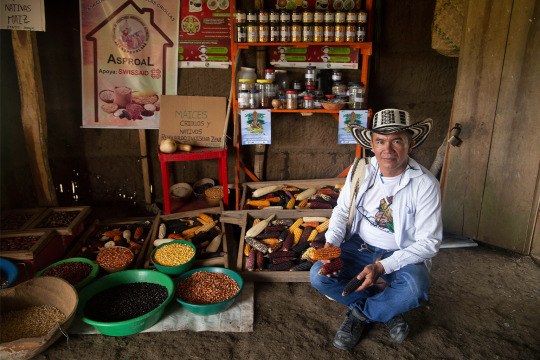
Pictured: Remberto Gil is a seed guardian and farmer who works at the Communitarian Seed House, where the ASPROL association stores 32 seeds of rare or almost extinct species. Image by Monica Pelliccia for Mongabay.
Located near Gil’s house, the seed bank hosts a rainbow of 12 corn varieties, from glistening black to blue to light pink to purple and even white. There are also jars of seeds for local varieties of beans, eggplants, pumpkins and aromatic herbs, some stored in refrigerators. All are ancient varieties shared between local families.
Outside the seed bank is a terrace where chickens and turkeys graze under an agroforestry system for farmers to emulate: local varieties of passion fruit, papaya and banana trees grow above bushes of ají peppers and beans. Traditional medicinal herbs like toronjil or lemon balm (Melissa officinalis) form part of the undergrowth.
Today, 25 families are involved in sharing, storing and commercializing the seeds of 32 rare or almost-extinct varieties.
“When I was a kid, my father brought me to the farm to participate in recovering the land,” says Nilvadys Arrieta, 56, a farmer member of ASPROAL. “Now, I still act with the same collective thinking that moves what we are doing.”
“Working together helps us to save, share more seeds, and sell at fair price [while] avoiding intermediaries and increasing families’ incomes,” Gil says. “Last year, we sold 8 million seeds to organic restaurants in Bogotà and Medellín.”
So far, the 80% of the farmers families living in the Zenù reserve participate in both the agroecology and seed revival projects, he adds."
-via Mongabay, February 6, 2024
#indigenous#ecology#agroforestry#agriculture#traditional food systems#traditional medicine#sustainable agriculture#zenu#indigenous peoples#farming#colombia#indigenous land#traditional knowledge#seeds#corn#sustainability#botany#plant biology#good news#hope#climate action#climate change#climate resilience#agroecology#food sovereignty
1K notes
·
View notes
Photo
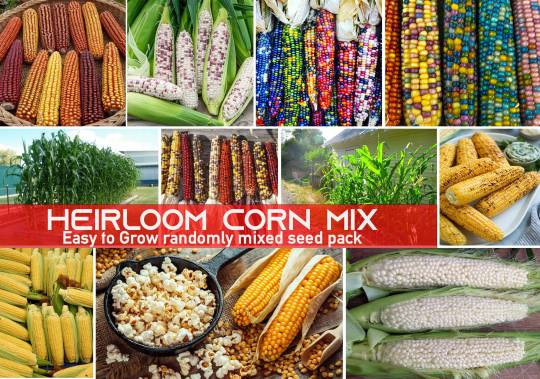
HUGE MIXED CORN Seeds Mix, Heirloom Organic Non-Gmo BN25 CORN Heirloom Mix 25 + Seeds vegetable garden SPRING SUMMER popcorn sweetcorn. HEIRLOOM - OPEN POLLINATED Most use this Mix Corn for decorative purposes, but young ears can definitely be roasted or boiled for dinner. Add to soups or salads for a fun pop of color and flavor. Loved for their ornamental value, Glass Gem's kernels are also good as popped corn or ground for cornmeal. Count: 25 Full Sun Sprouts in 7-10 Days Seed Depth: 1-2" Ideal Temperature: 75-80 F Plant Spacing: 12" Plant height: 4-5' Frost Hardy: No Eye-catching color Sweet, with lots of corn flavor Higher antioxidants than other sweet corn Color deepens with cooking Bred using traditional, non-GMO practices We've grown lots of colorful corn in our test gardens, but this mix is the first to combine dazzling purple and white kernels with a creamy, sweet corn flavor. When you sink your teeth into these kernels, you'll experience a juicy sweetness and creamy, old-timey corn flavor. Absolutely delicious! It's also higher in antioxidants than other sweet corn varieties. It has been selected for shorter and stronger plants to help prevent lodging; shinier and glossier kernels; 30-35% red husks and an ideal shank length for ease of pulling the husk back. The ears average 9 to 11" in length and have a wide range of color combinations including striped kernels. We’re sure you’ll find this fine ornamental corn to be an attractive addition to your fall displays. An interesting and tasty mix of sweet corn varieties. Starts producing in about 70 days from planting seeds, a real novelty, super delicious and excellent in the kitchen, very ez to grow! Sweet corn can be sown in spring after all danger of frost has passed. Successive plantings are possible to extend the harvest until September in most areas in America. From yummy open-pollinated sweet corn enjoyed at the dinner table, to colorful dried corn used for decorating homes and grinding cornmeal, you’ll find it here. Species: Variety of Corn. We do NOT make any claims that you will receive all 125+ seed varieties since we have no way of knowing which are which. Please note that all available varieties have been randomly mixed in ONE SINGLE PACKET – so there will a surprise factor until fruit start to set! Rainbow Corn Mix, Sweet, Ambrosia Hybrid, Blue Hopi, Golden Bantam, Honey Select Hybrid, Jubilee Hybrid, Nirvana Hybrid, Peaches and Cream, Picasso Hybrid, Flint Corn, Dent Corn, Popcorn, Sweet Rainbow Corn, Open Oak Party Mix, Indian Mini Mix Corn, Ornamental Corn, Ornamental Maize mix, Bodacious Sweet Corn and much more Growing Tips: Direct sow into the richest soil available 1-2 weeks before last spring frost. Succession planting prolongs harvest; planting in blocks improves pollination. Ears of corn are ready to harvest about 17-20 days after the silks appear. The kernels should be firm. Open an ear and pierce a kernel with your fingernail. If the liquid is watery, the corn is not ripe yet. It should be milky. If it is creamy, it is overripe and will not taste as sweet. Firmly grip the ear and twist downward to harvest. Take care not to break the plant when harvesting the first ear, or the second ear will not develop. Most corn produces two ears. Store unhusked corn in the fridge and consume as soon as possible. Sh2 and SE varieties keep the longest in the fridge, up to one week. Corn freezes well after blanching and may also be canned using a pressure cooker. Immature ears may be pickled. For better ear fill, plant a number of short rows together instead of a single long row, this helps insure pollination. How to Sow and Plant Growing corn is easy provided you have enough space and plenty of sun. Corn is wind-pollinated, so you need to plant in blocks to ensure pollination. You should have a minimum 10 foot by 10-foot area. The exception to this rule is ‘On Deck’ corn, which has been bred to grow in containers. If you are growing ‘On Deck’, choose a container that is at least 24 inches wide and deep and plant nine seeds evenly spaced. Isolate corn varieties when recommended (Sh2s), by planting corn seeds at least 250 feet apart, or select varieties that mature at least 2 weeks apart so they will not cross-pollinate. When choosing a site for corn, plant on the north side of your garden so the tall plants do not shade other plants in your vegetable garden. Corn is a warm-season crop and should not be planted in cool soils. The non Sh2 varieties tend to be more tolerant of cool soils, but in general, the soil should be about 65 degrees F or warmer. Sow corn seed 1 inch deep, 5 to 6 inches apart in rows 2 to 3 feet apart. Seedlings emerge in 7-14 days. When corn seedlings are 3-5 inches tall and healthy, thin to 1 foot apart. How to Grow Keep weeds under control during the growing season. Weeds compete with plants for water, space, and nutrients, so control them by either cultivating often or using mulch to prevent their seeds from germinating. Keep plants well-watered during dry periods to promote uninterrupted growth. Corn needs 1-2 inches of rain per week for best production. Use a rain gauge to check to see if you need to add water. Corn is also a heavy feeder and will benefit from side dressings of fertilizer applied as directed through the growing season. Monitor for pests and diseases. Check with your local Cooperative Extension Service for pest controls recommended for your area. Suckers tend to form at the base of the plants; they help support the stalks and make food for the plant. The stalks may have to be staked in windy areas, but in general, they are self-supporting. Sunflowers are a good companion plant for corns. Direct sow sunflowers in rows parallel to corn rows to help separate corn varieties that need isolation from each other. Choose sunflower varieties of comparable height to the corn plantings. The sunflower border, with vibrant hues in russets to golden-yellow, will add sparkle next to the almost all-green corn plot. The ‘Three Sisters (corn, bean, and squash) are traditional companion plantings with Native American gardeners. Note: No tracking # will be provided to make the shipping cost-effective for us and free for you. Returns & exchanges Not accepted. But please contact me if you have problems with your order Our seeds are guaranteed to germinate. Once the seeds have sprouted, please understand that we cannot be held responsible for the many uncontrollable growing and climatic conditions that must be met to ensure the success of your crop(s). I try my best to make my buyers happy and would appreciate it if you'd contact me first if you have any questions or problems with your order. If you open a case before contacting me first, I will automatically block you from future purchases. Thank you for your understanding. http://springsofeden.myshopify.com/products/huge-mixed-corn-seeds-mix-heirloom-organic-non-gmo-bn25
#popcorn#sweet corn seeds#corn seeds#organic corn seeds#heirloom corn seeds#Ornamental Corn#Flint Corn#Dent Corn#Sweet Rainbow Corn#Open Oak Party Mix
0 notes
Text
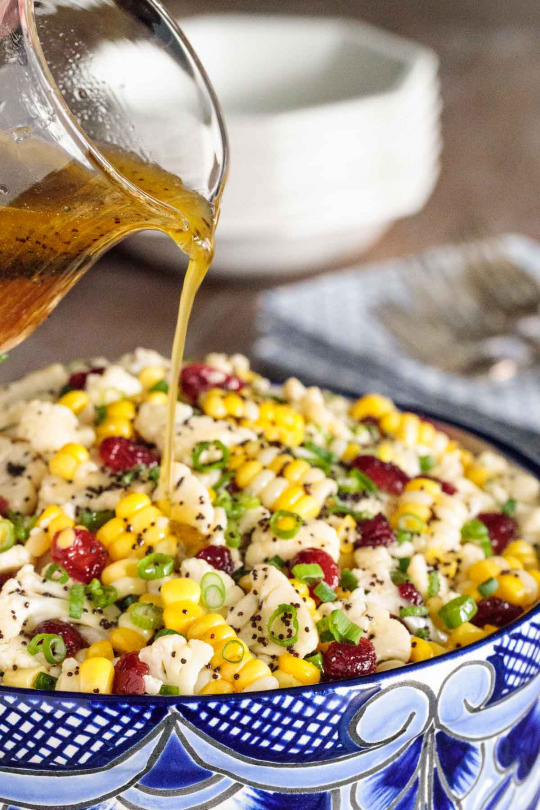
Poppyseed Cauliflower and Fresh Corn Salad (Vegan)
#vegan#appetizer#lunch#salad#cauliflower#corn#dried cranberries#green onion#salad dressing#poppy seeds#ginger#lemon#maple syrup#olive oil#black pepper#sea salt#eat the rainbow
546 notes
·
View notes
Photo

Papercraft commission of Aziraphale and Crowley (and a duck expectantly awaiting bread)! I loved seeing the huge variety of fashion these guys got to wear throughout their long history, but I admit I do have a particular fondness for these outfits in particular. A classy, clandestine meeting by the duck pond!
#good omens#aziraphale#crowley#ineffable husbands#papercraft#papercutting#paper art#my art#but don't feed ducks bread actually please#it's better to feed them seeds and corn and peas and such!#tasty treats for duck friends
3K notes
·
View notes
Text
There should be a Gotham deity of some sort that’s an old lady who’s been around since Dick was Robin, but every time one of the Robins is in danger she just shows up and drops bird seed in front of them
#she was there before Jason went kaboomy and instead of helping she just spread some sunflower seeds and loose corn#he remembers and now he has beef with an old lady deity#dc#robins#dick grayson#nightwing#jason todd#red hood#tim drake#red robin#stephanie brown#spoiler#batgirl#damian wayne#batfam#Robin#bat family#batman
253 notes
·
View notes
Text

Pumpkin in Korean
#vegan#appetizer#lunch#salad#cauliflower#corn#dried cranberries#green onion#salad dressing#poppy seeds#ginger#lemon#maple syrup#olive oil#black pepper#sea salt#eat the rainbow
52 notes
·
View notes
Text
Hopi Blue
I planted a type of corn called Hopi Blue this spring. I had trouble with germination, and only ended up with a small patch, but I've been looking forward to seeing what it does. The seller, Territorial seeds, advertises that it can be eaten young as sweet corn, or allowed to mature and dry to use as grinding corn (for flour) or a beautiful decoration.
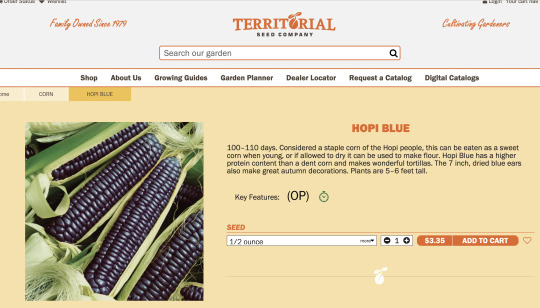
Yesterday evening it seemed like a few ears were finally ready. And:
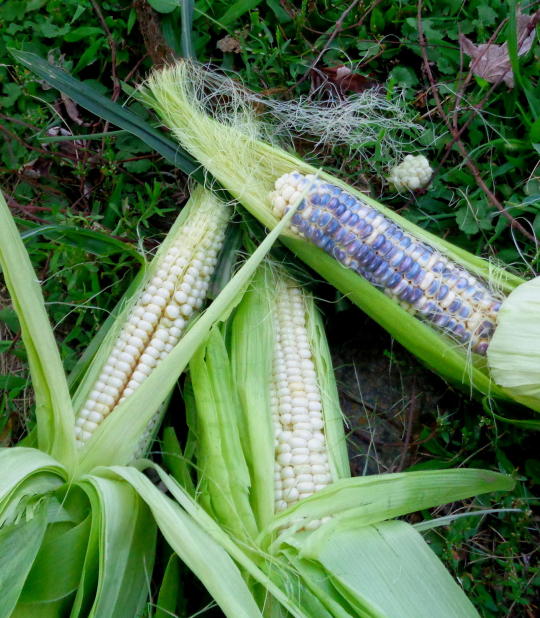
Hmm. That is not very. Blue. I looked at the website, and hidden at the bottom of the reviews section I found this:

Ok. Fair enough. But if that's the case, the description should very much SAY that when it tells you that you can harvest it before maturity and eat it as sweet corn. Just - TELL us CLEARLY what we're buying - why is that so hard. I will let the remaining ears stay on the stalk until full maturity and report back to you then.
44 notes
·
View notes
Text
listen if you have an oc that's joseph seed's kid you are obligated to make them as weird and off-putting as possible. this is federal law btw.
17 notes
·
View notes
Text

Advertisement for Hyland Seeds' corn hybrid and soybean seeds (1984).
29 notes
·
View notes
Text
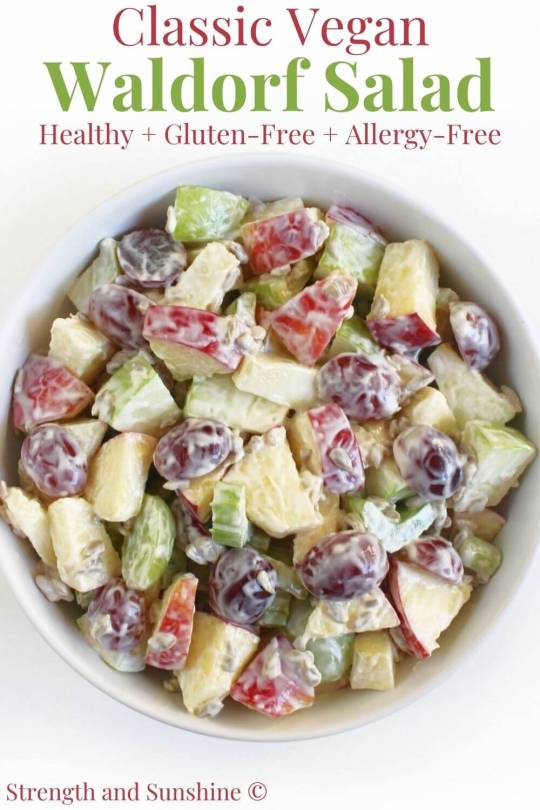
This Vegan Waldorf Salad is the perfect combination of crisp, creamy, sweet, and tangy! The classic 19th-century Waldorf Astoria salad recipe with nut-free, allergy-friendly updates using apples, celery, grapes, sunflower seeds, and a sweet eggless mayo dressing! A quick and easy chilled appetizer or side dish for any occasion and easily customized!
Vegan Waldorf Salad (Gluten-Free, Allergy-Free) https://wp.me/p4UrDz-941
#gluten-free#vegan#vegetarian#dairy-free#egg-free#nut-free#peanut-free#allergy-free#soy-free#sesame-free#coconut-free#corn-free#kid-friendly#fruit#apples#celery#grapes#sunflower seeds#salad#waldrof salad#waldorf astoria#new york city#vintage recipes#retro recipes#old-fashioned recipes#fruit salad#easy recipe#no-cook recipe#vegan salad#side dish
8 notes
·
View notes
Text
midwestern hades & persephone where it's six kernels of corn
#brought to you by me getting into a pomegranate for the first time in a year#and being struck by how like the empty corn cob the inner parts of the pom look#after you've shucked off all the seed
14 notes
·
View notes
Note
ARENT TADPOLES,,,like, a solid dark green color,,
wait are eels even green i uhm apologies late night rambling
🇫🇷
I thought that tadpoles were translucent and turn color when they get bigger like eels do. But Imma be honest, I only know as much as I do about morays because I hyperfixate hard and idk much about frogs.
When I get really interested in something I become google for it aksdalkjsdkl
#mochi asks#🇫🇷 anon#i know a lot about transformers for example since ive been into it for like 10 years#its a curse and blessing#same for the history of food but specifically mexican american food in the southwest#for example did you know that hot chocolate was originally from mexico and more bitter#and also did you know that the development of flour tortillas as we know is an extremely recent thing#though most people think of tortillas as the ones from mexico#spain did have a similar flatbread by that name originally that eventually was used to refer to the corn flatbreads made by the indigenous#so now tortillas are synonymous with mexico rather than spain#also tequila can only be made from a very specific blue agave plant that has to be grown from tequila jalisco mexico and distilled too#otherwise its considered mezcal and not tequila#tequila as mexico's national drink is also a recent concept even though mezcal has been drunk by people for hundreds of years#one last thing#the story that tamales were originally made of human meat is a myth and they were often eaten with animal meat seeds fruit and seasonings#ancient mexica women would made them and it was a big ordeal within the family and can take days to make many of them#which is a tradition that still holds up in many modern mexican families today!#okay im done now yall didnt ask for that alskdjalksdjalksj
7 notes
·
View notes
Text
ONE SHOT SPOILERS

She's gone.
Ngl I cried during my first playthough.
#niko one shot#one shot#one shot game#one shot niko#one shot fanart#niko#lightbulb#corn kernels#corn#kernel#seed#wines#plushbunbun
46 notes
·
View notes
Text
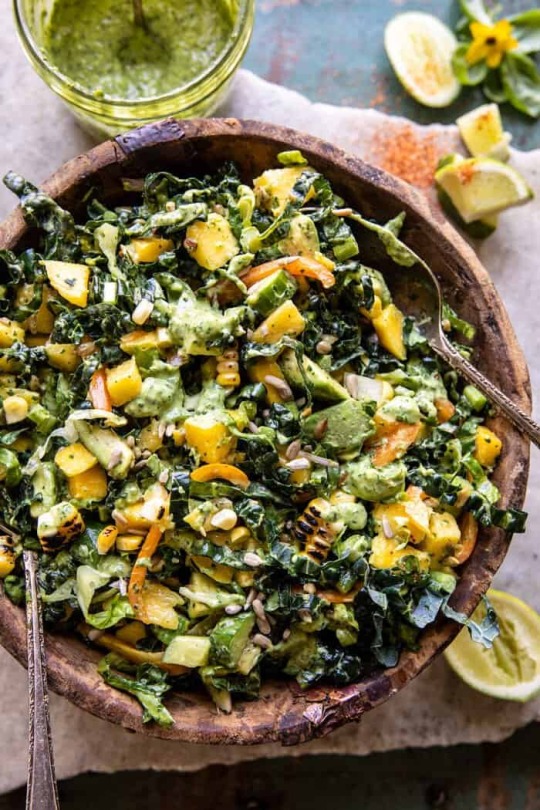
Mango Kale Chopped Salad with Cilantro Lime Dressing (Vegan)
#vegan#lunch#salad#kale#mango#cabbage#bell peppers#cucumber#corn#avocado#sunflower seeds#salad dressing#cilantro#thai basil#lime#ginger#jalapeño#tahini#olive oil#tajin#easy to raw veganize#💚#💛
103 notes
·
View notes
Text

hi my life is a disaster.
#natural fibers#nettle#I’m losing my mind guys.#cyanoupdates#also pictured: grape seeds ibuprofen my endless todo list my homemade#*my homemade pestle that was previously used to smash oak galls#white rabbit candy in a new flavor that I’ve never seen before#idk man. life’s a mess#oh. and some corn husk cordage#the fiber rabbit hole goes all the way down folks. sad to say
17 notes
·
View notes